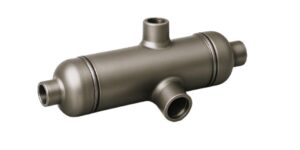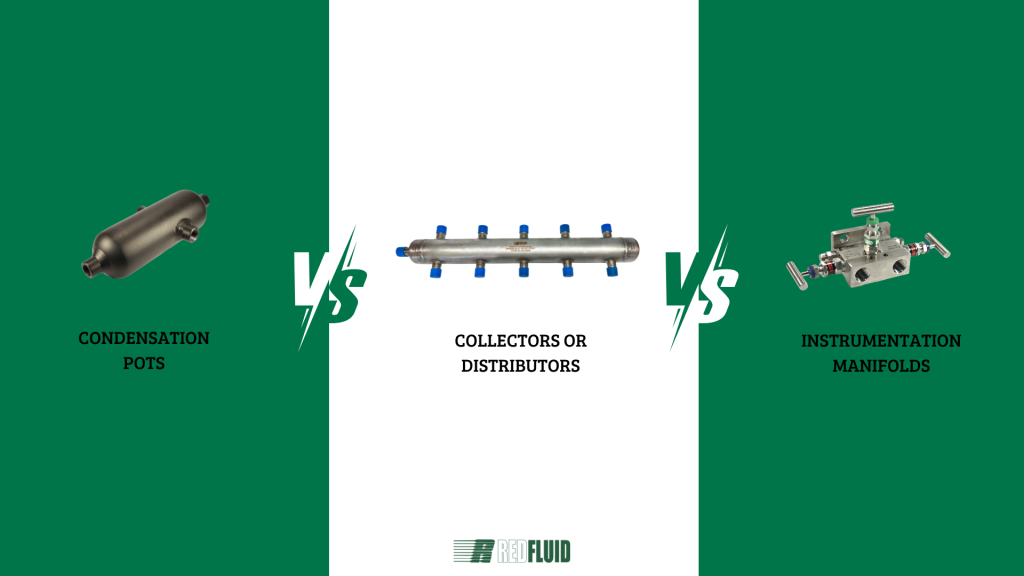
CONDENSATE POTS FOR HIGH TEMPERATURE
What are condensate pots or barrel pots exactly? Maybe this is the question you’re asking yourself, and you feel the need to understand what condensate
Let’s see. First of all, it is necessary to make a sketch of what we are talking about. We have different names for condensate pot and synonyms for the same part, but with different functions. Some distribute air or fluid and others are used to separate or condense steam.
Here is a short list to give you an idea:
I have already told you that there are many names to describe the same thing.
Many of these names are used interchangeably in the industry, but they can be classified into two main groups.
Let’s get into the first group:
Condensate pots are pressure vessels designed to capture and retain condensate and any particles or foreign bodies that may accumulate in gas system piping. The pots allow instruments and valves to be connected directly to the pipeline for sampling purposes, as the pot provides a secure barrier between instruments and steam or gases present in the pipeline.
In addition, the condensate pots are also used for:
Let’s dig a little deeper into the group of condensing pots.
In steam applications, condensate pots are crucial to protect pressure transmitters and ensure accurate measurements. These vessels condense the steam before it reaches the instruments. They are strategically installed where they collect condensate liquids and through a purge are collected inside. The steam or air continues to flow through the piping.
Similar to the condensate pot, but used specifically for measuring the flow of corrosive and high density fluids. It is filled with a liquid that does not mix with the process fluid, providing an effective barrier that protects the instruments and ensures pressure transmission without direct contact with the problematic fluid.
This is the large group number 2. And be very careful with this. You can’t confuse it with instrumentation manifolds. The collectors are a series of outputs and inputs connected to a circuit. Sometimes, they can have various sizes and different types of connections to accommodate all process needs.

This part is almost the most important. When we are asked for barrels, some information is always missing. Whether it is the thickness, the number of entries, the dimensions… For this reason, I leave you a list of what you have to take into account when you ask us for a distributor.
In short, understanding the function and variety of condensate pots, manifolds and manifolds is essential to optimizing the performance of any steam system or corrosive and dense fluid handling system. From selecting the right volume and working pressure, to choosing the right material of construction and connections, every detail counts to ensure the efficiency and safety of your installation. At Redfluid, we are committed to providing you with high-quality, customized solutions tailored to your specific needs.
Hey, and don’t hesitate to contact us with any questions or specifications; our team of experts is ready to help you choose the best equipment for your project. Together, we can make your operations safer, more efficient and reliable.
Share this post

What are condensate pots or barrel pots exactly? Maybe this is the question you’re asking yourself, and you feel the need to understand what condensate